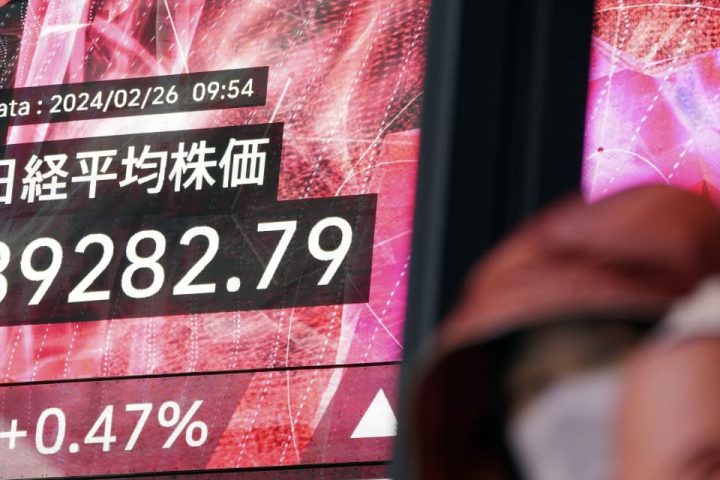Does Japan do it better? This burning question of the 1980s may be returning in a new context: luring semiconductor investment.
Japan has even more ground than the U.S. to regain in the chipmaking game. In 1990, the country produced half the world’s semiconductors. That’s around 10% now. Its most advanced fabs can produce 40 nanometer chips, the Center for Strategic and International Studies reports. State of the art is 3 nm.
Tokyo, like Washington, has big plans to do better. Its 2022 Economic Security and Promotion Act was a rough equivalent to the U.S. Chips and Science Act. Prime Minister Fumio Kishida’s government aims to triple sales of domestically produced chips by 2030 to 115 trillion yen ($762 billion). It’s already committed a trillion yen or so in subsidies.
Japan does seem to have taken an early lead in the new semiconductor race. Global giant
Taiwan Semiconductor Manufacturing
(ticker: TSM) is ahead of schedule on a new “fab” in the southwestern city of Kumamoto and planning a second one. Production at its megaproject outside Phoenix was lately delayed by a year till 2025. CEO Mark Liu cited an “insufficient number of skilled workers.”
There’s an apples-to-oranges element in this comparison. Japan is looking to hit a solid single, manufacturing relatively thick microchips to supply its electronics and auto industries today. The U.S. is swinging for the fences: churning out the ultrathin chips of tomorrow in Arizona.
Still, Japan may be more on the right track. Taiwan Semi is financing its Kumamoto fab jointly with two core customers,
Sony Group
(6758.Japan) and auto parts powerhouse
Denso
(6902.Japan). The government is kicking in close to Y500 billion.
In Phoenix, Taiwan Semi has to build first and qualify for Chips Act funding later. In theory that would bar it from building anything in China over the next decade, though a waiver is expected. “The U.S. approach is more ambitious, but Japan’s more focused strategy is more likely to succeed,” says Mario Morales, who heads semiconductor research at consultant IDC.
Japan has maintained global leadership at key points in the chip supply chain, particularly equipment and chemicals. Other links, like testing and packaging, can be sourced relatively nearby. “All that lives in Asia,” Morales says. “The Chips Act doesn’t address the supply chain.”
A centralized Japanese government can smooth over roadblocks that have become endemic to building anything big and complicated in the multijurisdictional, litigious U.S.—from providing a community playground to fighting environmental lawsuits. “We need to revisit 1970s environmental laws to make them more streamlined and predictable,” says Sujai Shivakumar, head of CSIS’ Renewing American Innovation Project.
Japan, after decades of deflation, is also cheaper on key inputs like construction and labor, adds Christopher Miller, a Tufts Fletcher School professor who studies the chip sector.
Japan Inc. does have its own long-ball ambitions in semiconductors. A dozen top names are teaming with U.S.-domiciled
IBM
(IBM) and the government on a new venture called Rapidus, which promises to produce 2-nanometer chips by 2027. Shivakumar is skeptical. “This looks like a bit of a Hail Mary pass, trying to leapfrog several generations of technology,” he says.
The same might be said of both countries’ overarching goal of a semiconductor industry buffered from Taiwan’s unique vulnerabilities. “You can bet that the most advanced stuff will still be made in Taiwan,” Morales says.
It’s still worth trying.
Read the full article here







